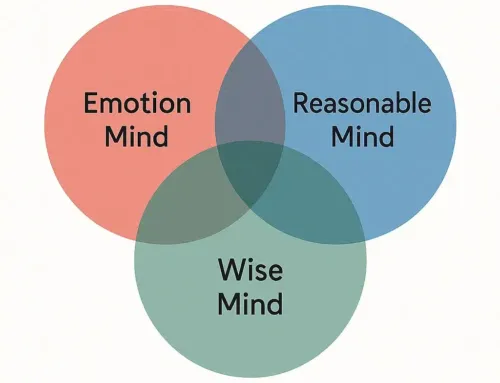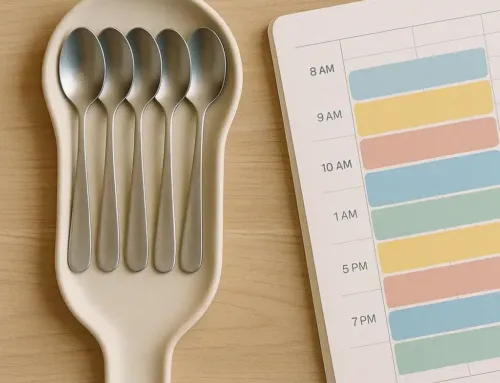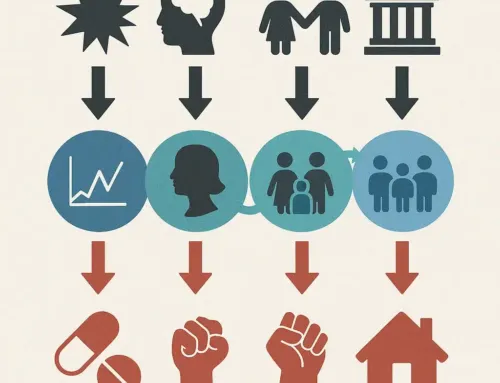
Approx. read time: 18.2 min.
Post: 3 Psychological Green Flags That Prove Your Partner Is a Keeper
Introduction
In our quest for meaningful connections, it’s easy to focus on what’s lacking in our relationships. However, recognizing the positive signs can be equally, if not more, important. Psychological research offers insights into behaviors that indicate a partner is truly a keeper. Let’s delve into three such signs.
1. They Share in Your Joy: Understanding Compersion
In healthy, long-term relationships, joy should never be a solo experience. One of the most affirming signs that your partner is truly “a keeper” is their ability to be genuinely happy for you — not just in big, celebratory moments, but in everyday wins and personal growth milestones. In psychology, this is referred to as compersion.
What is Compersion?
Compersion is a term often described as the emotional opposite of jealousy. It refers to the sincere, heartfelt pleasure someone feels when they witness their partner experience joy — even when that joy doesn’t directly benefit them. Originally popularized in the context of polyamorous relationships, compersion has since gained traction in broader psychological discussions as a crucial trait in any loving, secure bond.
According to the Encyclopedia of Sexual Psychology and Behavior (2023), compersion encompasses a range of empathic and affiliative emotions — from pride and excitement to awe and emotional mirroring. It is rooted in deep empathy and a secure sense of self. When a partner experiences compersion, they aren’t competing for attention or worried about their status; instead, they delight in their partner’s success or happiness as if it were their own.
“Compersion is the hallmark of an emotionally secure relationship. It reflects not only empathy, but confidence in the love you share.”
— Dr. Emily Cook, Marriage & Family Therapist
Why Compersion Matters
The ability to feel joy on behalf of another — especially a partner — signals emotional maturity, empathy, and low levels of relational insecurity. It’s more than just clapping when good things happen; it’s internalizing your partner’s success as a shared emotional win. That type of validation strengthens emotional intimacy, enhances trust, and nurtures the idea that each partner is truly seen and valued.
Couples who practice compersion tend to:
-
Celebrate each other’s personal growth without envy
-
Avoid passive-aggressive competitiveness
-
Have healthier communication and mutual support systems
-
Strengthen their emotional bond during both triumphs and trials
Examples of Compersion in Real Life
Let’s break it down with relatable, practical examples that showcase compersion in a range of day-to-day scenarios:
🧑💻 Career Wins
Your partner lands a major promotion at work, or finally gets recognition for a long-term project. Instead of feeling insecure or envious, you throw them a spontaneous celebratory dinner, share the news proudly with others, or even shed a few tears of joy because you know how hard they’ve worked for it.
Green flag moment: You don’t just say “congrats” — you feel it deep in your bones.
🎨 Personal Hobbies or Talents
Your partner paints a beautiful portrait, writes a poem that moves others, or records their first podcast. Even if it’s not a shared interest of yours, you beam with pride. You encourage them to keep going, offer positive feedback, and even help promote their work because you’re genuinely proud.
Green flag moment: You’re their biggest cheerleader, not because you have to be, but because you want to be.
👨👩👧👦 Parenting and Co-Parenting
In parenting partnerships, compersion can show up when one parent excels at bonding moments with the kids — say, teaching your child to ride a bike or getting a heartfelt “I love you” drawing. Instead of feeling left out, you feel warm inside because your family is thriving.
Green flag moment: You celebrate their bond, knowing that your child benefits from love — no matter which parent it’s coming from.
🏆 Solo Achievements
Your partner crosses the finish line in a 10K, completes a yoga certification, or makes progress in therapy. You feel inspired by their progress, not threatened. You might not have been part of the journey, but you’re a part of the celebration.
Green flag moment: You feel proud of their evolution, even if it took place without your direct involvement.
🧠 Intellectual Curiosity
They go on a Wikipedia binge about black holes or spend weeks learning Japanese on Duolingo. Instead of dismissing their excitement as “nerdy” or “weird,” you sit and listen with curiosity — or better yet, ask follow-up questions and get excited with them.
Green flag moment: Their passion lights you up, too, regardless of the topic.
How to Cultivate Compersion
If compersion doesn’t come naturally, don’t worry — like empathy, it can be developed with conscious effort. Here are a few ways to train your mind to lean into joy instead of judgment:
-
Practice emotional mirroring. If your partner is excited, try smiling back or asking follow-up questions. The goal is to connect emotionally.
-
Reflect on shared wins. Remind yourself that your partner’s success enhances the relationship, not detracts from your own value.
-
Check your inner dialogue. If you feel jealousy bubbling up, ask yourself: “Is this emotion rooted in insecurity? What does it say about what I need to heal?”
-
Celebrate out loud. Don’t just quietly feel happy for them — show it. A well-timed “I’m so proud of you” can go a long way.
The Science Behind Smile Synchrony
An often-overlooked form of compersion is nonverbal emotional mirroring — a phenomenon psychologists refer to as smile synchrony. A 2024 study published in the journal Emotion found that couples who frequently return each other’s smiles — and do so quickly — experience significantly higher relationship satisfaction and emotional alignment.
This research highlights how small physical expressions of shared joy, such as eye crinkling, laughter, and even vocal inflection, reinforce intimacy. When you smile and your partner instantly mirrors that joy, it’s more than chemistry — it’s psychological attunement.
“We found that the quicker a smile was reciprocated, the more likely partners reported higher levels of mutual understanding, closeness, and long-term satisfaction.”
— Dr. Jane Greeson, lead researcher, Emotion (2024)
Final Thoughts: Joy is a Shared Language
If your partner lights up when you light up — when they don’t need the moment to be about them to fully appreciate it — you’ve found something rare and beautiful. Relationships thrive not only on shared struggles but especially on shared celebrations. Joy is magnetic, contagious, and affirming. And a partner who feels yours as deeply as their own? That’s a keeper.
2. They Support You Unconditionally: The Power of Partner Buffering
No relationship is immune to stress, conflict, or external pressure. But what defines the strength and longevity of a romantic partnership is how you show up for each other during those times. One of the clearest signs your partner is a long-term keeper is their ability to offer unwavering support — not just when it’s convenient or easy, but especially when it’s not.
In psychological terms, this kind of support is known as partner buffering. Far from being just another jargon term, it represents a deeply rooted, evidence-based dynamic that can mean the difference between emotional resilience and relational breakdown.
What Is Partner Buffering?
Partner buffering refers to the consistent, emotion-regulating support one partner provides to another, particularly in moments of psychological or emotional distress. First coined in the attachment literature, buffering is when your significant other steps in — physically, emotionally, or socially — to protect your sense of self, soothe anxiety, and affirm your value.
According to a seminal 2020 study published in Current Directions in Psychological Science, effective partner buffering can act as a “social balm,” soothing emotional wounds and reinforcing attachment security, especially in individuals with anxious or avoidant attachment styles (source).
“A buffered partner is an emotionally safer partner. Their presence down-regulates threat responses in the brain.”
— Dr. Jeffry A. Simpson, Professor of Psychology, University of Minnesota
In simpler terms: when things get tough, a buffering partner doesn’t flinch. They lean in — offering support, validation, and emotional steadiness.
Why Partner Buffering Is a Green Flag
While flowers and gifts might get more Instagram love, it’s emotional protection that sustains real love over decades. A partner who buffers well does three crucial things:
-
Reassures you when you’re vulnerable
-
Defends you when you feel criticized or invalidated
-
Remains emotionally attuned and present during conflict or stress
Such behaviors don’t just help you survive tough moments — they build emotional immunity, reinforcing a secure base from which you can face life’s challenges.
Partner buffering has also been shown to:
-
Reduce emotional reactivity in conflict
-
Improve attachment security over time
-
Encourage emotional risk-taking (vulnerability, honesty)
-
Lower cortisol (stress hormone) levels in tense situations
Real-Life Examples of Partner Buffering
Let’s explore a few practical, real-world situations where partner buffering shows up — often quietly, but powerfully.
🧩 Emotional Disagreements
You’re having a hard day and lash out unintentionally. Instead of reacting defensively, your partner takes a breath, sees the pain behind your words, and calmly says, “I can tell something’s weighing on you. Talk to me when you’re ready.”
Green flag moment: They choose empathy over ego.
👪 Family Conflicts
Your parents make a subtle, cutting remark at a family dinner — something about your life choices, your body, or how you raise your kids. Before you even process the sting, your partner steps in and respectfully says, “We support each other’s decisions. Let’s keep the space kind.”
Green flag moment: You didn’t have to ask for defense — it came unprompted, instinctively.
🧠 Mental Health Struggles
You’re overwhelmed with anxiety or stuck in a depressive episode. Instead of getting frustrated, your partner adapts: they make meals, remind you to rest, and hold space without trying to “fix” you. They validate how real the struggle is and remind you, “You’re not broken. I’m with you.”
Green flag moment: They don’t pathologize your pain — they normalize their support.
🎯 Personal Setbacks
You fail an exam, miss a job promotion, or have your creative pitch rejected. While others say “better luck next time,” your partner texts you quotes from your favorite motivational speaker, offers to help you plan next steps, and reminds you that you’re still incredible.
Green flag moment: They connect your worth to your character, not your performance.
💬 Conflict Within the Relationship
Even during arguments, a buffering partner doesn’t aim to “win.” Instead, they listen actively, ask clarifying questions, and say things like, “I want to understand where this is coming from,” or “We’re on the same team.”
Green flag moment: They fight for the relationship, not in it.
The Attachment Lens: Why Buffering Matters Even More If You’re Insecure
For people with insecure attachment styles — especially anxious-preoccupied or fearful-avoidant types — partner buffering is not just helpful; it’s healing. These individuals often fear rejection, abandonment, or judgment. In such cases, a consistently responsive partner can gradually “retrain” the nervous system to feel safe, seen, and worthy of love.
“Over time, emotionally consistent partners can literally rewire our attachment circuits. Love becomes less about proving your worth and more about resting in it.”
— Dr. Sue Johnson, Creator of Emotionally Focused Therapy (EFT)
Research also shows that couples where one partner reliably buffers the other report higher levels of:
-
Mutual trust
-
Emotional regulation
-
Communication satisfaction
-
Overall relationship resilience
This is especially true during high-stress life events such as job loss, illness, financial hardship, or grief.
How to Recognize — and Offer — Partner Buffering
If you’re wondering whether your partner is a buffer (or if you are), here are a few key behaviors to look for:
They are attuned: They notice subtle emotional shifts in your mood, and they respond rather than ignore.
They validate, not fix: They listen with empathy and reflect feelings, rather than rushing to solve the issue.
They’re protective without being possessive: They defend you from unfair treatment without becoming controlling.
They respect emotional boundaries: They ask what you need, instead of assuming they know what’s best.
Conversely, you can cultivate better buffering in your own relationship by:
-
Practicing active listening — use phrases like, “That sounds hard. How can I help?”
-
Avoiding defensiveness — don’t minimize their stress; meet it with curiosity.
-
Offering consistent emotional availability — especially during difficult times.
Final Thoughts: Standing in the Fire Together
Unconditional support isn’t flashy. It rarely makes headlines or gets public applause. But in the quiet corners of life — in the awkward dinners, the 3 a.m. panic attacks, the messy miscommunications — partner buffering is everything.
If your partner has your back when it matters — not just when it’s convenient or easy, but when it’s raw and real — you’re not just in a relationship. You’re in a safe haven. And that, above all, is the kind of love that lasts.
3. They Anticipate Your Needs: Altruism in Action
One of the most profound signs that you’re in a healthy, emotionally intelligent relationship is when your partner consistently shows up for you — without being asked. Not because they’re trying to earn favor or keep score, but because they are emotionally attuned, empathetic, and genuinely invested in your well-being.
This type of unspoken support is a reflection of altruism in action — a key psychological pillar of long-term relationship satisfaction and security.
What Is Altruism in Relationships?
In its simplest definition, altruism is the selfless concern for the well-being of others. It’s doing something kind or helpful for someone else without expecting anything in return — not even recognition. In romantic relationships, this takes the form of small daily gestures, silent acts of service, and a persistent attentiveness that doesn’t require prompting.
According to research published in Personality and Individual Differences (2019), choosing a partner with high altruistic tendencies — someone who is giving, emotionally generous, and responsive — is a major predictor of long-term relationship success (source).
“Altruistic individuals invest in others not for personal gain but because they value the other’s welfare. In a romantic context, this sets the tone for sustainable, satisfying partnerships.”
— Dr. Brent Simpson, Professor of Sociology
In short, altruism reflects a mindset of “us” over “me.”
Why It Matters: Going Beyond the “Ask”
Relationships often break down when one partner feels like they must constantly request support, attention, or affection — or worse, when those needs are met with irritation or resistance. Over time, that imbalance leads to emotional exhaustion.
In contrast, partners who anticipate each other’s needs before those needs are explicitly stated — who remember what matters, who listen between the lines — create an atmosphere of trust, safety, and comfort.
Altruistic gestures matter because they say:
-
“I see you.”
-
“I’m paying attention.”
-
“You don’t have to fight to matter here.”
That’s powerful.
Real-Life Examples of Altruism in Healthy Partnerships
Let’s explore common, real-world situations where altruistic behavior shows up — often in quiet, deeply meaningful ways.
☕ Everyday Thoughtfulness
You wake up to find your coffee made just how you like it. Your partner remembered that you had a stressful meeting today and wanted to give you a peaceful start. They didn’t ask — they just knew and acted.
Green flag moment: They tune in to your rhythms and do what they can to lighten the load.
🧹 Shared Responsibility
You’ve been handling a large portion of the housework lately. One night, without discussion, your partner cleans the kitchen, folds the laundry, and preps lunch for the next day — not because you asked, but because they noticed.
Green flag moment: They understand that love includes labor, and they share it gladly.
😷 Care in Sickness
You catch a flu or feel mentally depleted. Your partner doesn’t just check in once — they create a cozy recovery space, stock up on medicine, keep the kids or noise at bay, and check your temperature. They show care in all the tiny, necessary ways.
Green flag moment: Your discomfort triggers their compassion, not their inconvenience.
🎁 Surprise Gestures
Maybe it’s flowers. Maybe it’s a favorite snack. Maybe it’s booking you a massage after a tough week. These aren’t grand, performative acts; they’re simple reminders that your partner is thinking of you, even when you’re not together.
Green flag moment: They delight in giving you joy — not to receive praise, but to show they care.
🧠 Emotional Labor
You’re working through a complex situation — a difficult conversation with a friend, self-doubt about a decision, or even burnout. Your partner steps in not just with advice, but with listening, reassurance, and space.
Green flag moment: They aren’t just present in action — they’re emotionally available, too.
How to Recognize Altruistic Intent
Altruism isn’t always about what is done, but why it’s done. Here’s how to recognize when it’s truly altruistic:
-
It’s not transactional. They don’t expect praise, reciprocation, or leverage.
-
It’s consistent. It happens even when no one’s watching.
-
It’s personalized. The gesture reflects your unique preferences or current state.
-
It’s effortless. There’s no emotional price tag attached — no guilt, no keeping score.
The Science of Generosity in Couples
Several studies have highlighted the role of generosity — a close cousin of altruism — in romantic satisfaction.
In a landmark 2014 report from the University of Virginia’s National Marriage Project titled “The State of Our Unions,” researchers found that couples who regularly engaged in small, altruistic gestures for each other reported significantly higher marital satisfaction than those who didn’t — regardless of income, children, or length of the relationship (source).
Generosity was described not as grand romantic gestures, but as “acts of service, listening, affection, and thoughtful timing.” These micro-acts formed a relational foundation that buffered against bigger challenges like financial strain or conflict.
“In the long run, the little things matter more than lavish vacations or expensive jewelry. It’s about consistency, not currency.”
— Dr. W. Bradford Wilcox, Director of the National Marriage Project
How to Be More Altruistic in Your Own Relationship
Whether you’re hoping to offer more to your partner or cultivate a relationship with mutual generosity, here are a few steps to embody altruism:
-
Pay attention to detail. What’s their stress pattern? What cheers them up? Learn their love language and cater to it, unasked.
-
Ask how you can support them today. Not generically — specifically. “Is there something I can take off your plate?”
-
Give with joy, not obligation. If you’re doing something only to get something back, it’s not altruism — it’s a transaction.
-
Celebrate their wins privately. You don’t need an audience to clap when they succeed. Let your applause come from sincerity.
Final Thoughts: Love Without Prompt
The most lasting relationships aren’t built on big declarations, but on small, consistent acts of noticing. A partner who anticipates your needs isn’t just loving you — they’re studying you, honoring you, showing that they care enough to remember and act.
It’s not about mind-reading. It’s about mindfulness.
When a person shows up without being asked — with your favorite snack, a warm towel, or a word of encouragement at just the right time — they’re proving they don’t just hear your words. They hear your heart.
That’s more than partnership. That’s devotion.
Conclusion: The Psychology of a Keeper
In a world that often encourages us to focus on red flags, it’s both revolutionary and healing to notice the green flags. When you’re with someone who:
-
Shares in your joy as if it were their own (compersion),
-
Stands firmly by your side in difficult moments (partner buffering), and
-
Anticipates your needs without being prompted (altruism),
you’re not just experiencing affection — you’re witnessing emotional intelligence in action.
These aren’t passive traits; they’re active investments in your relationship’s emotional ecosystem. Each one is a quiet form of love — not always loud or cinematic, but deeply consistent. And in long-term partnerships, consistency always beats intensity.
By learning to recognize these strengths in your partner, you shift the narrative from fear-based analysis to gratitude-based reflection. That shift doesn’t just improve how you see them — it changes how you respond, love, and grow together.
Practical Takeaway
-
If your partner celebrates your weird hobbies, they’re paying attention.
-
If they step in during moments of vulnerability, they’re choosing connection over comfort.
-
If they bring you peace without you needing to ask, they’re thinking about you even when you’re silent.
And if they’re doing all three? You don’t just have a partner — you have a keeper.
The healthiest relationships aren’t about avoiding fights or never being disappointed. They’re about creating a space where love, support, and understanding outnumber fear, silence, and emotional labor. When those green flags wave — don’t ignore them. Recognize them. Celebrate them. And most of all, reciprocate them.
Because at the end of the day, the greatest relationships are built not on finding perfection — but on recognizing effort, intention, and love in motion.
References
-
What is Compersion? Retrieved from: https://www.whatiscompersion.com
-
How to Achieve Compersion in Romantic Relationships – PsychCentral. Retrieved from: https://psychcentral.com/relationships/compersion
-
Partner Buffering of Attachment Insecurity – Simpson, J.A., et al. (2020), Current Directions in Psychological Science. Retrieved from: https://journals.sagepub.com/doi/abs/10.1177/0963721413510933
-
Buffering and Spillover of Adult Attachment Insecurity in Couple and Family Relationships – Nature Reviews Psychology. Retrieved from: https://www.nature.com/articles/s44159-021-00011-1
-
Doing Good and Feeling Good: Relationships Between Altruism and Well-Being – World Happiness Report (2023). Retrieved from: https://worldhappiness.report/ed/2023/doing-good-and-feeling-good-relationships-between-altruism-and-well-being-for-altruists-beneficiaries-and-observers
Related Videos:
Related Posts:
Hackers Exploit 52 Zero-Days on Day One of Pwn2Own Ireland
Starting a Career with Strategic Planning: Signing an Early Contract at Magna International in 2003
Make your Chromebook or Google Chrome run super faster
What Are Virii, Viruses, and Malware? Explained…
Finding Joy in the Everyday: Embracing Family, Legacy, and the Inner Child









